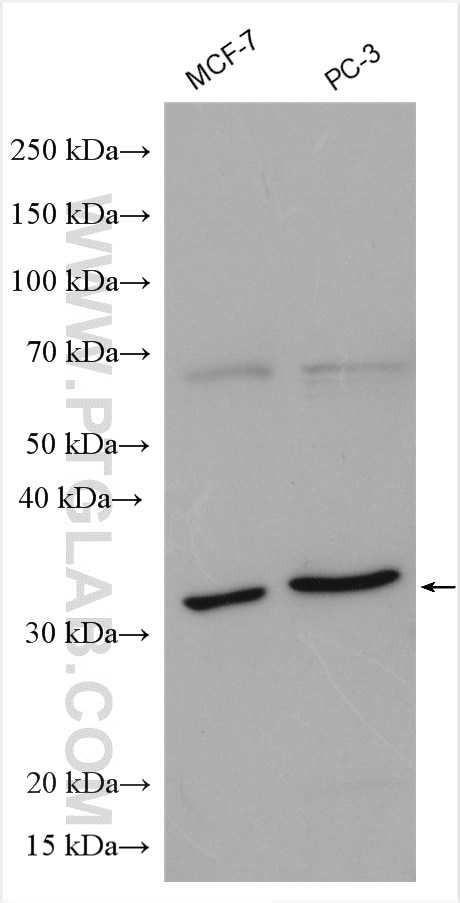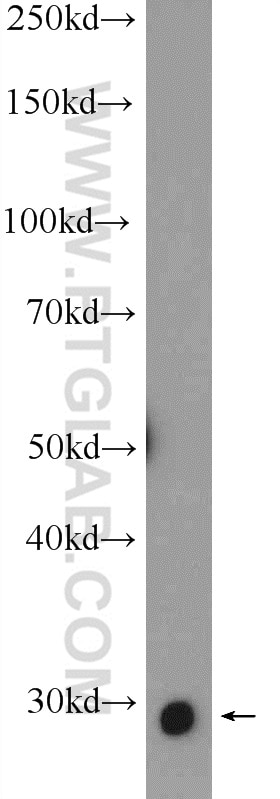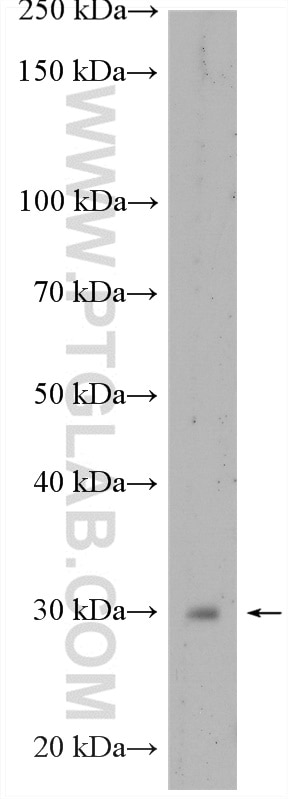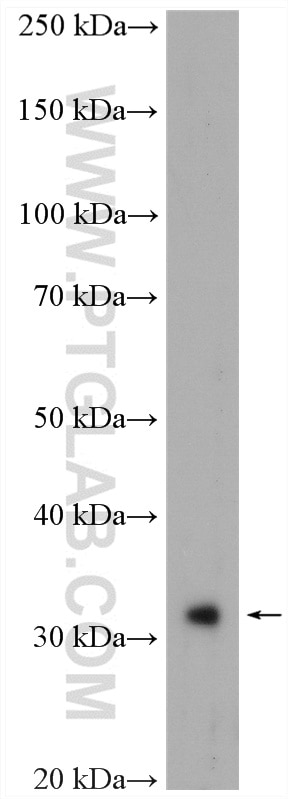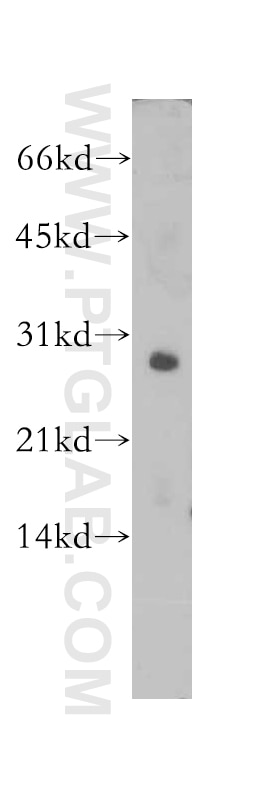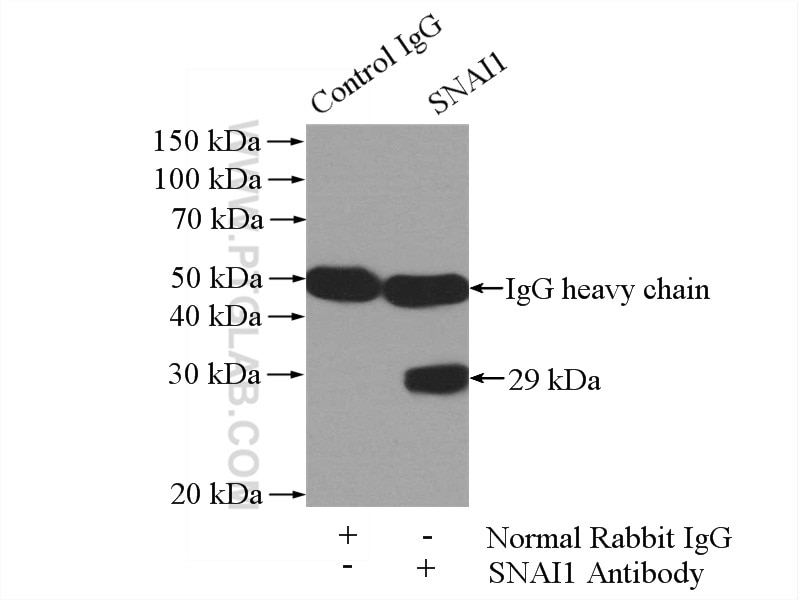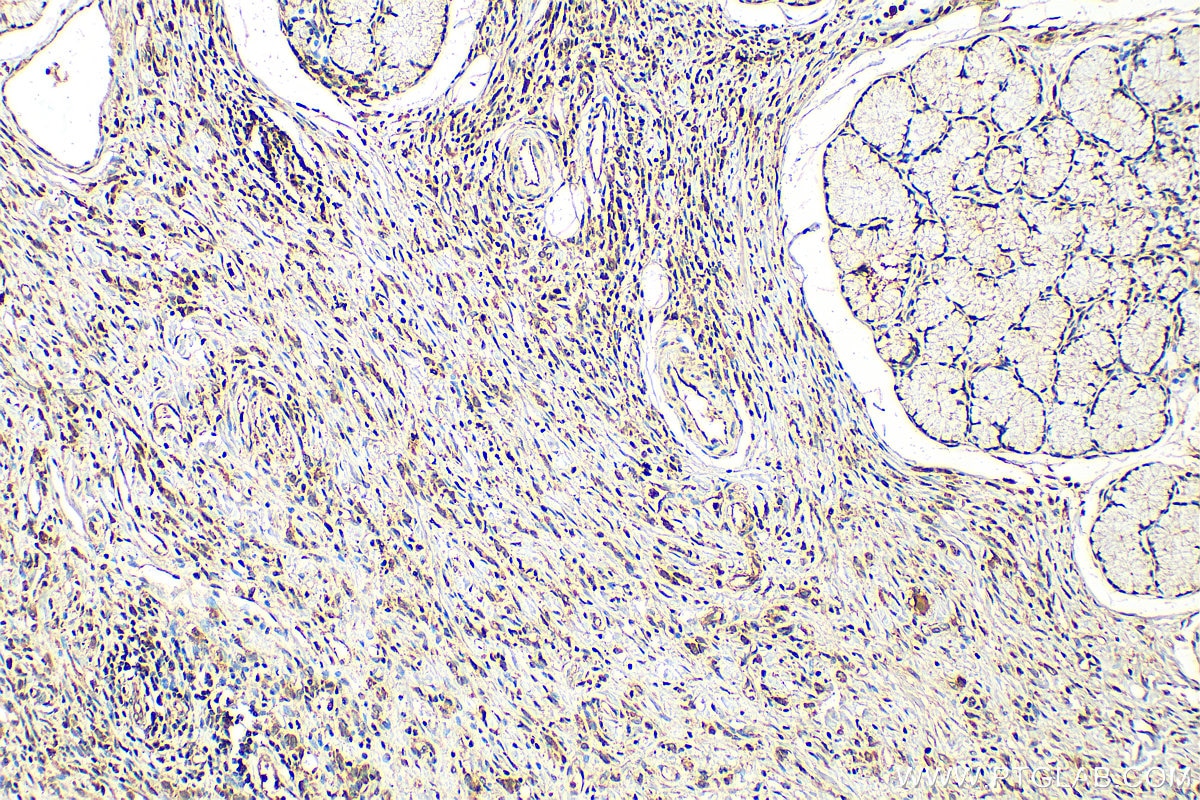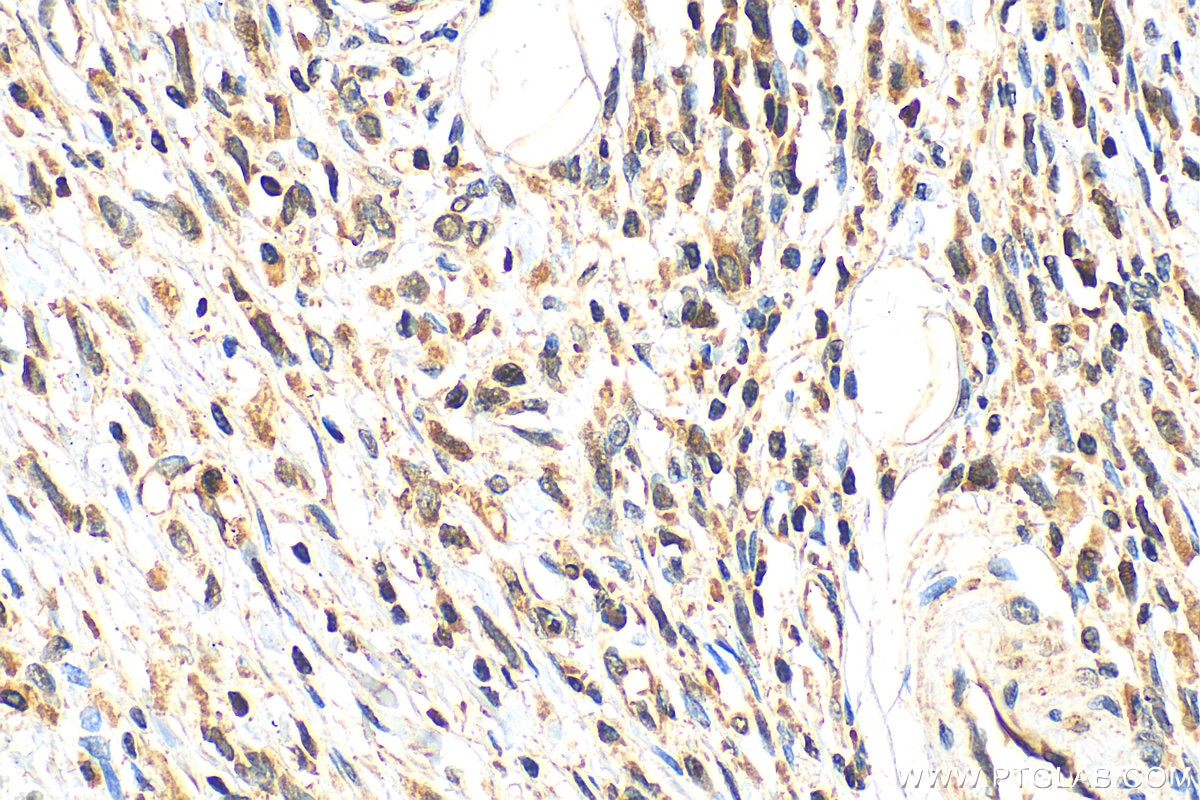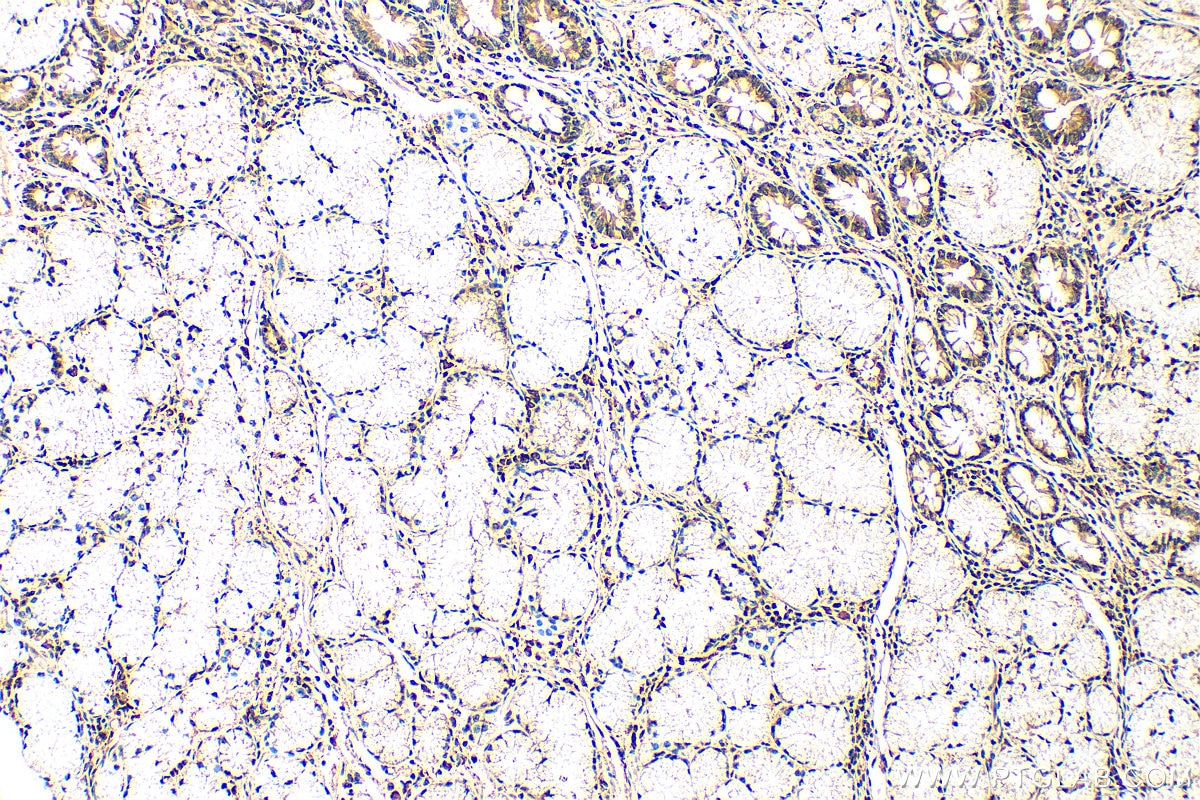Tested Applications
| Positive WB detected in | mouse heart tissue, PC-3 cells, BxPC-3 cells, human heart tissue, COLO 320 cells, MCF-7 cells |
| Positive IP detected in | MCF-7 cells |
| Positive IHC detected in | human stomach cancer tissue Note: suggested antigen retrieval with TE buffer pH 9.0; (*) Alternatively, antigen retrieval may be performed with citrate buffer pH 6.0 |
Recommended dilution
| Application | Dilution |
|---|---|
| Western Blot (WB) | WB : 1:500-1:1000 |
| Immunoprecipitation (IP) | IP : 0.5-4.0 ug for 1.0-3.0 mg of total protein lysate |
| Immunohistochemistry (IHC) | IHC : 1:50-1:500 |
| It is recommended that this reagent should be titrated in each testing system to obtain optimal results. | |
| Sample-dependent, Check data in validation data gallery. | |
Published Applications
| KD/KO | See 10 publications below |
| WB | See 478 publications below |
| IHC | See 48 publications below |
| IF | See 37 publications below |
| IP | See 3 publications below |
| CoIP | See 4 publications below |
| ChIP | See 3 publications below |
Product Information
13099-1-AP targets SNAI1 in WB, IHC, IF, IP, CoIP, ChIP, ELISA applications and shows reactivity with human, mouse, rat samples.
| Tested Reactivity | human, mouse, rat |
| Cited Reactivity | human, mouse, rat, canine, goat |
| Host / Isotype | Rabbit / IgG |
| Class | Polyclonal |
| Type | Antibody |
| Immunogen |
CatNo: Ag3723 Product name: Recombinant human SNAI1 protein Source: e coli.-derived, PGEX-4T Tag: GST Domain: 1-264 aa of BC012910 Sequence: MPRSFLVRKPSDPNRKPNYSELQDSNPEFTFQQPYDQAHLLAAIPPPEILNPTASLPMLIWDSVLAPQAQPIAWASLRLQESPRVAELTSLSDEDSGKGSQPPSPPSPAPSSFSSTSVSSLEAEAYAAFPGLGQVPKQLAQLSEAKDLQARKAFNCKYCNKEYLSLGALKMHIRSHTLPCVCGTCGKAFSRPWLLQGHVRTHTGEKPFSCPHCSRAFADRSNLRAHLQTHSDVKKYQCQACARTFSRMSLLHKHQESGCSGCPR Predict reactive species |
| Full Name | snail homolog 1 (Drosophila) |
| Calculated Molecular Weight | 264 aa, 29 kDa |
| Observed Molecular Weight | 29-35 kDa |
| GenBank Accession Number | BC012910 |
| Gene Symbol | SNAI1 |
| Gene ID (NCBI) | 6615 |
| RRID | AB_2191756 |
| Conjugate | Unconjugated |
| Form | Liquid |
| Purification Method | Antigen affinity purification |
| UNIPROT ID | O95863 |
| Storage Buffer | PBS with 0.02% sodium azide and 50% glycerol, pH 7.3. |
| Storage Conditions | Store at -20°C. Stable for one year after shipment. Aliquoting is unnecessary for -20oC storage. 20ul sizes contain 0.1% BSA. |
Background Information
SNAI1, a member of SNAI1 family of protein, participates in the epithelial to mesenchymal transition(EMT) and formation and maintenance of embryonic mesoderm. The snail family share a common structural, that a highly conserved C-terminal region containing a zinc finger transcription factor. SNAI1 interacts with other corepressor, such as Ajuba, PRMT5 and SIN3a or HDAC1 and 2, to repress the target gene. As the phosphorylation modification of SNAI1 protein, the range of molecular weight of SNAI1 is about 25-30 kDa (PMID: 22276203 ). Once phosphorylated (probably on Ser-107, Ser-111, Ser-115 and Ser-119) it is exported from the nucleus to the cytoplasm where subsequent phosphorylation of the destruction motif and ubiquitination involving BTRC occurs.
Protocols
| Product Specific Protocols | |
|---|---|
| IHC protocol for SNAI1 antibody 13099-1-AP | Download protocol |
| IP protocol for SNAI1 antibody 13099-1-AP | Download protocol |
| WB protocol for SNAI1 antibody 13099-1-AP | Download protocol |
| Standard Protocols | |
|---|---|
| Click here to view our Standard Protocols |
Publications
| Species | Application | Title |
|---|---|---|
Biomater Res Treatment of bladder cancer by geoinspired synthetic chrysotile nanocarrier-delivered circPRMT5 siRNA. | ||
Theranostics FSH induces EMT in ovarian cancer via ALKBH5-regulated Snail m6A demethylation | ||
Nat Commun Symmetry breaking of tissue mechanics in wound induced hair follicle regeneration of laboratory and spiny mice. | ||
EMBO J SIRT5-mediated desuccinylation of PPA2 enhances HIF-1alpha-dependent adaptation to hypoxic stress and colorectal cancer metastasis | ||
Cancer Res An in vivo CRISPR screen identifies that SNRPC promotes triple-negative breast cancer progression |
Reviews
The reviews below have been submitted by verified Proteintech customers who received an incentive for providing their feedback.
FH Angie (Verified Customer) (07-26-2025) | Used at 1:500 dilution and incubated overnight at 4°C. Secondary antibody: Donkey-anti-rabbit (Alexa Fluor 680) at 1:20000 dilution incubated at room temperature for 1 hour.
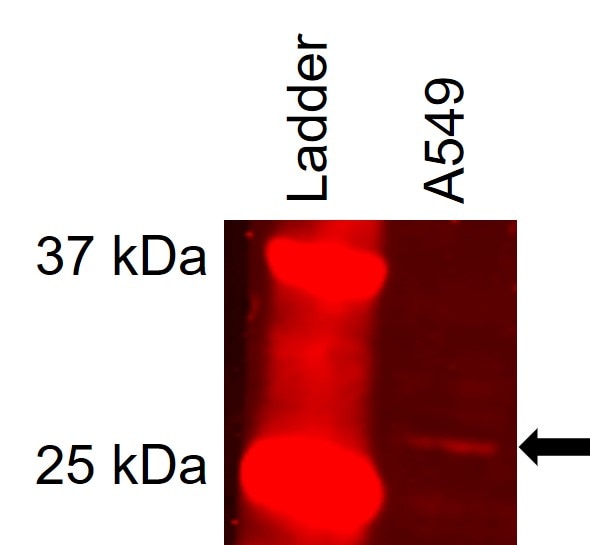 |
FH Gisella (Verified Customer) (07-10-2025) | Antibody worked well in canine bladder tissue IHC (FFPE) at dilution of 1:100. Developed almost immediately, so probably could have tried higher dilution.
|
FH Udesh (Verified Customer) (08-16-2023) | Worked well in WB at 1:2000
|
FH Hala (Verified Customer) (11-23-2021) | works very good
|



